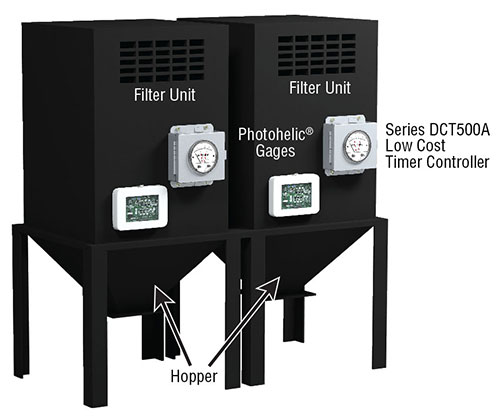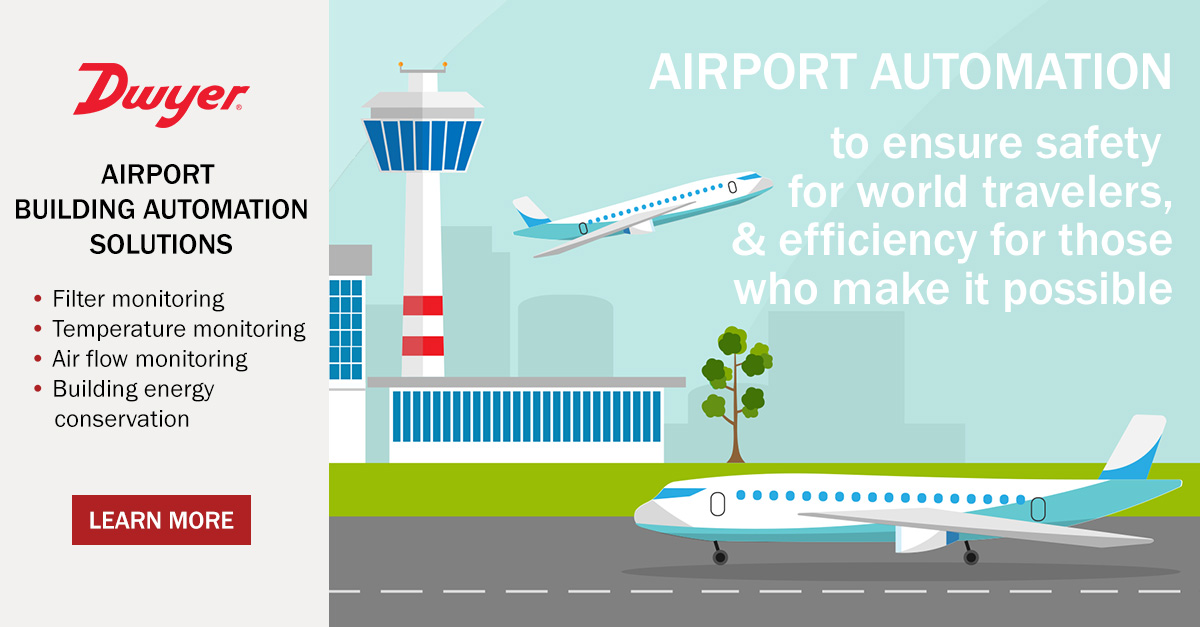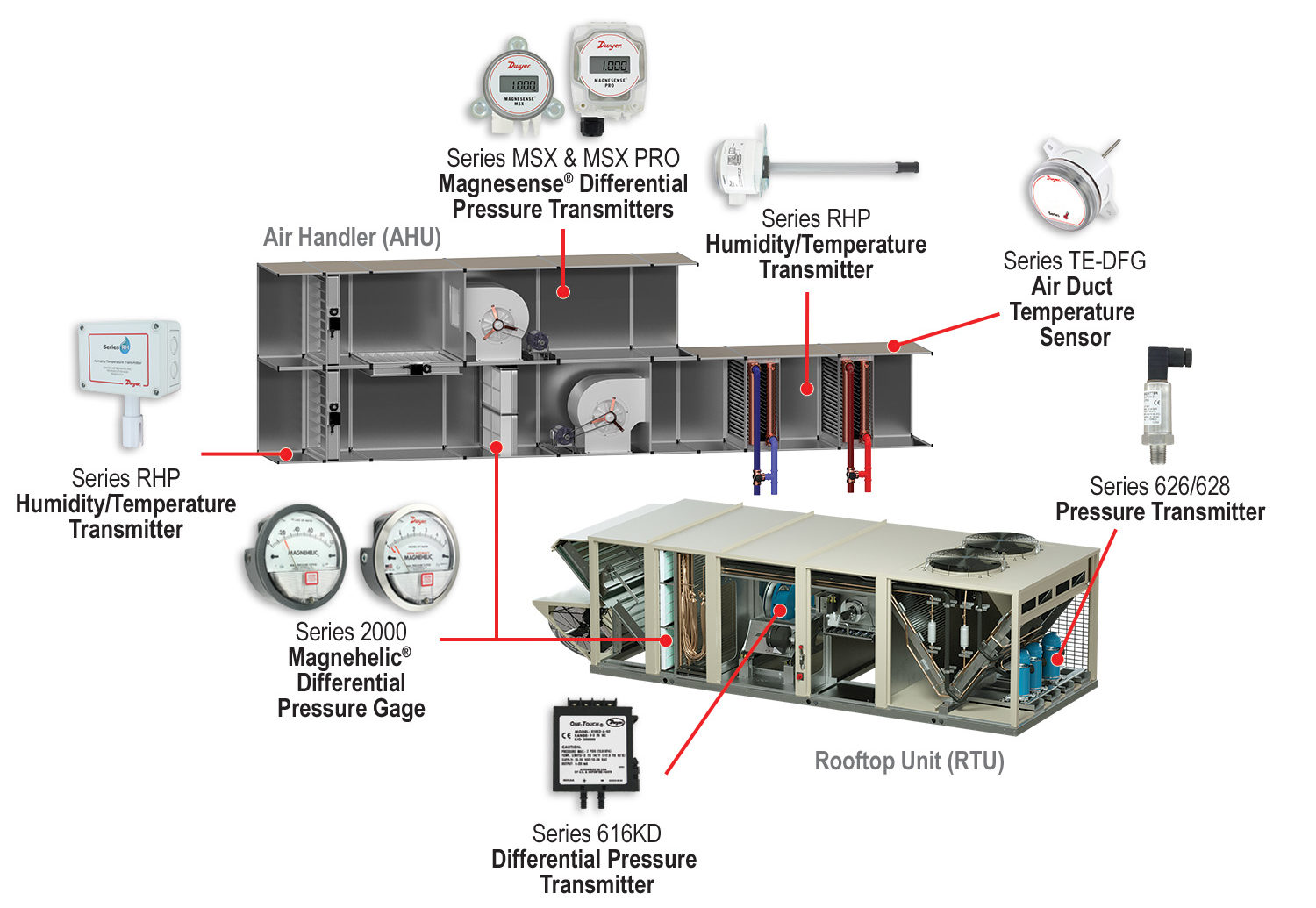 There are several different component parts that go into a dust collector for monitoring and control purposes. In this article, we are going to focus on timer boards. We will be comparing and contrasting a few of our timer boards, as well as discussing how we could help you to better protect your equipment in the most cost-effective manner. Continue reading “Dust Collector Timer Controllers”
There are several different component parts that go into a dust collector for monitoring and control purposes. In this article, we are going to focus on timer boards. We will be comparing and contrasting a few of our timer boards, as well as discussing how we could help you to better protect your equipment in the most cost-effective manner. Continue reading “Dust Collector Timer Controllers”
Airports Use Dwyer Building Automation System Products
Tapping your foot anxiously, you glance at your airline ticket and the terminal noted on it. The flight will be boarding in a few minutes. As you look around, there are several other people waiting for this flight; it seems the plane is fully booked. You close your eyes and breathe in deeply, calming your nerves. The air seems fresh, not stagnant, despite the large number of people around you. There are no empty seats in the area, so you carefully find a window to lean against as you watch the airplanes of other terminals and wait for your own.

Airports must provide a controlled environment for their visitors, while allowing scheduled maintenance within a building that is operational 24/7. Additionally, they must offer a high level of security for their passengers, all while simultaneously moving those travelers and their luggage rapidly through the building, in a finite amount of time.
Generally, airports are large complex buildings divided into numerous areas, with a number of smaller units located within them. Building automation systems (BAS) are used within airports to monitor and control sensors for things like filters, temperature, air flow, and building energy usage.
Airport automation, put simply, is needed to help ensure safety for world travelers and efficiency for those who make it possible. When an airport’s BAS is functioning properly, travelers can focus on the tasks at hand while everything runs in the background to keep them safe. Continue reading “Airports Use Dwyer Building Automation System Products”
What is an Air Handler?
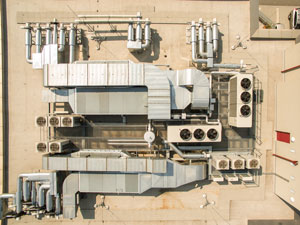 Imagine you sit down at a restaurant on the outdoor patio, and as you’re waiting to order your food, you glance at the large HVAC system on top of the building across the street. Several questions cross your mind: Why do they need such a big system? And what goes into it? Today I want to introduce one of the vital aspects of a building’s HVAC system, the air handler. Continue reading “What is an Air Handler?”
Imagine you sit down at a restaurant on the outdoor patio, and as you’re waiting to order your food, you glance at the large HVAC system on top of the building across the street. Several questions cross your mind: Why do they need such a big system? And what goes into it? Today I want to introduce one of the vital aspects of a building’s HVAC system, the air handler. Continue reading “What is an Air Handler?”
Environmental Sensors & Controls for Poultry Houses
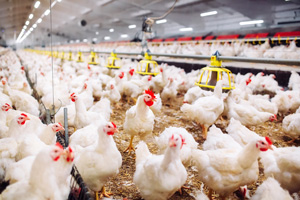 Ventilation can sometimes challenge even the best poultry growers. However, it is necessary to maintain both air quality and litter (a mixture of poultry excreta, spilled feed, feathers, and material used as bedding) conditions. Dwyer offers the latest sensor and control technology to help maintain proper environments. By choosing reliable, repeatable, and sustainable solutions, it’s possible to prevent and plan for potential unwanted and detrimental factors that can affect bird health and growth. Moisture (relative humidity / RH), carbon dioxide (CO2), and carbon monoxide (CO) are three major issues most growers will face in the broiler house coming out of the winter season and daily practices throughout the grow process. Continue reading “Environmental Sensors & Controls for Poultry Houses”
Ventilation can sometimes challenge even the best poultry growers. However, it is necessary to maintain both air quality and litter (a mixture of poultry excreta, spilled feed, feathers, and material used as bedding) conditions. Dwyer offers the latest sensor and control technology to help maintain proper environments. By choosing reliable, repeatable, and sustainable solutions, it’s possible to prevent and plan for potential unwanted and detrimental factors that can affect bird health and growth. Moisture (relative humidity / RH), carbon dioxide (CO2), and carbon monoxide (CO) are three major issues most growers will face in the broiler house coming out of the winter season and daily practices throughout the grow process. Continue reading “Environmental Sensors & Controls for Poultry Houses”
Rock & Roll with Belt Conveyor System Solutions
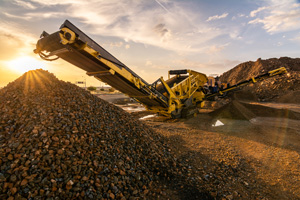 With one huge scoop, you grab the rock and stone in front of you, collecting it in the bucket of your front-end loader. You move forward, ready to dump the material into the load chute of the conveyor. Someone gives a shout, arms waving and signaling you to stop: “Hold up! We’ve got a jam.” The belt conveyor is down again for maintenance, and you’ve got some time on your hands; this could mean several hours of downtime for the team.
With one huge scoop, you grab the rock and stone in front of you, collecting it in the bucket of your front-end loader. You move forward, ready to dump the material into the load chute of the conveyor. Someone gives a shout, arms waving and signaling you to stop: “Hold up! We’ve got a jam.” The belt conveyor is down again for maintenance, and you’ve got some time on your hands; this could mean several hours of downtime for the team.
Hauling components is an important part of the production processes of varying industries including concrete, chemical, mining, wastewater treatment, and more. Within these bulk handling operations, belt conveyors are an economical way to transport materials of varying sizes. Continue reading “Rock & Roll with Belt Conveyor System Solutions”

